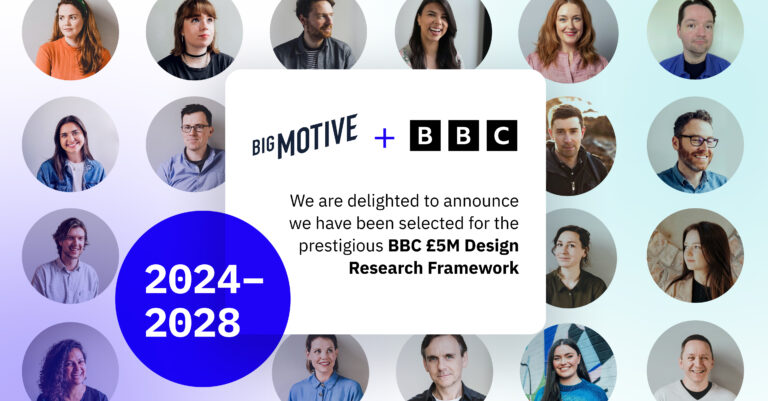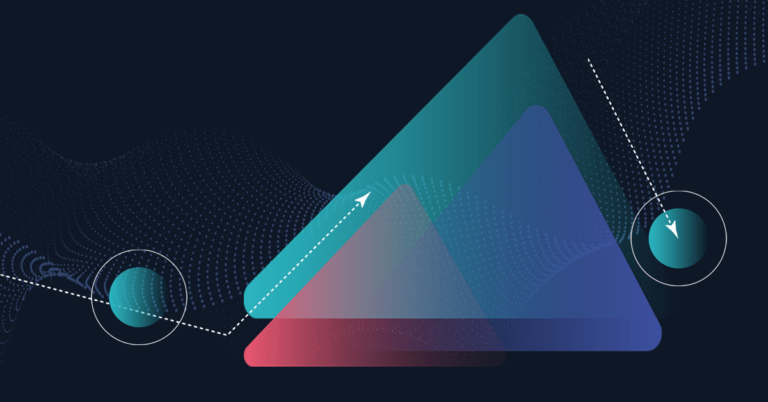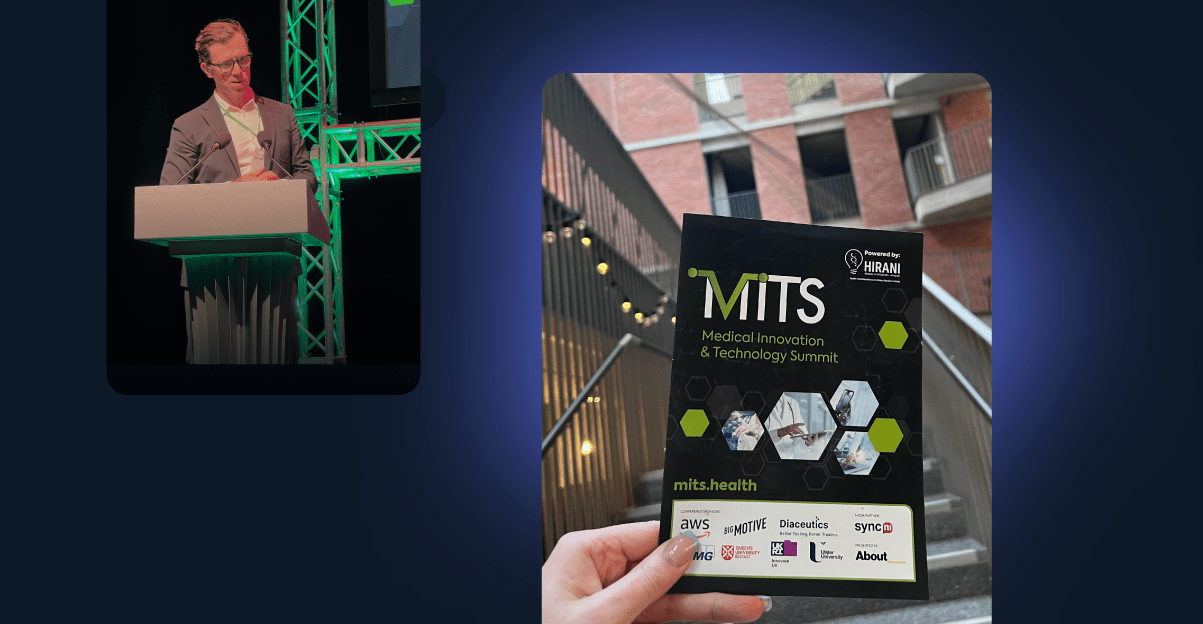
5 key learnings from MITS – Making a genuine change in health
When you think of the word ‘design’, you may instinctively think of things like art, graphics, websites and architecture. However, design expands much further and is a fundamental ingredient to the most successful products and services we use and experience every day.
The design process is as much a science as it is an art, and is becoming increasingly important and necessary in the space where health and technology collide.
In April HIRANI hosted the inaugural Medical Innovation and Technology Summit (MITS) in Belfast. The conference brought together 40 speakers from industry, academia and health along with 300 delegates to discuss the integration of technology into the healthcare landscape.
We, at Big Motive, curated and sponsored this conference to amplify the crucially important role that design can play in accelerating change in the health industry. The conference showcased brilliant med-tech ideas and achievements, allowing us to learn from others and share our own expertise.
With a background in medical device engineering, I am all too familiar with the challenges to make change happen in health. Witnessing the brilliant innovation and enthusiasm at the MITS conference reminded me of the power we have to make a difference when we design and collaborate together.
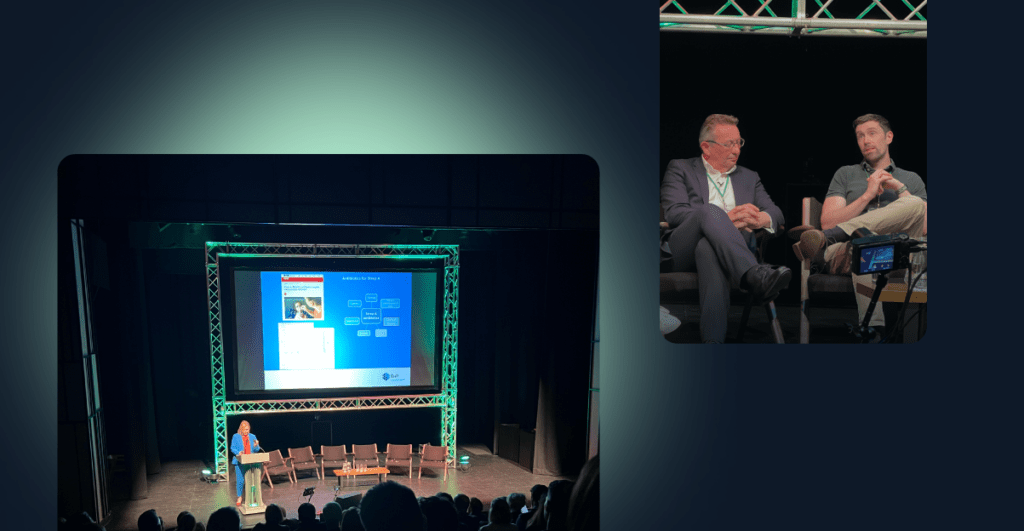
Reflecting on the fantastic talks at the summit, there were many great takeaways so here are my top 5:
1. Technology is a driver of positive change in healthcare
At a time when healthcare faces so many pressures, the need to create and strive for better services is more important than ever. MITS showcased fantastic innovations which demonstrated the power that technology can have on healthcare. And even more so, when design is leveraged to ensure new product and service innovation is fundamentally user-centred.
Assistant Professor of Design Innovation at Maynooth University, Trevor Vaugh reminded us of the wonderful impact technology can have on our lives and how it can help bring healthcare to the next level. Trevor worked with RTÉ on a series entitled Big Life Fix, which challenged a group of leading designers, engineers, computer programmers and technology experts to create inventions that will transform people’s lives. He spoke about a creation from the show of voice-banking technology, which helps give people with Motor Neuron Disease their own voice back.
This touching story was truly inspiring and showed that technology, when coupled with conscious design, has enormous potential that should be embraced.
2. Collaboration is key
Developing digital services for any sector or context is not an easy hill to climb, and when you add in the challenge of designing services to improve health outcomes, the challenge can feel like a mountain.
Many of the speakers shared slides populated with company logos, showcasing who has supported them on their journey. They spoke about partnerships and collaborations and thanked those who helped along the way, showing us that making a change in health is a team effort.
As Joann Rhodes CEO of HIRANI highlighted, there is so much talent in Northern Ireland, now is the time to collaborate and co-create positive change.
By working together we can avoid any blind spots and understand problems from multiple dimensions. Much like the challenge of any grand expedition, designing for health requires sherpas to help us navigate what is otherwise an unknown path forward – experts who can share expertise and significantly improve the chance of reaching the summit.
3. End-to-end service thinking
As a service designer, I was delighted to see a core theme emerge around systems thinking – considering technology’s wider impact.
Keynote speaker, Peter Keeling, CEO of Diaceutics, showed how a full end-to-end service strategy is essential to identify and address gaps to fully deliver benefits. Peter shared how Diaceutics mapped an oncology’s patient’s journey, highlighting its complexity and variability.
At Big Motive, we have seen how journey mapping and service blueprinting not only helps to identify inefficiencies and opportunities, but also helps you to connect with your user.
Cathy Harrison, Chief Pharmaceutical Officer in the Department of Health, stressed how this end-to-end service approach, with conscious collaboration, is the best way to bring about change. She focused on the importance of addressing the whole system when tackling big healthcare issues like cancer, dementia and diabetes.
4. Design for users, with users
Across the day we heard many speakers talk about how they brought users into the design process to drive impactful outcomes and solutions.
Keynote speaker Lorna Ross, Chief Innovation Officer at VHI Health and Wellbeing, challenged us to consider big picture human-centred design principles, such as spending time with real people in real environments, listening to user needs and observing the people who will actually use your product.
Designing for users has been well ingrained in our ethos at Big Motive. It makes complete sense to us to make sure your product is usable, but I would also encourage today’s creators to design ‘with’ users. As Lorna stated, this helps us to actually consider human nature and not get carried away by ‘limitless’ technology. Connecting with users takes us a step closer to building solutions that truly work for people – maximising the benefit to both the business and the user.
5. Test Test Test
Designing for health is definitely a high reward activity, there is no better motivation than changing and improving peoples’ lives. However, it can also be very challenging, carrying high risk with intensive regulations to meet to ensure user safety.
Speakers shared a variety of ways in which they have tested with users, from discovery research interviews to usability testing to prototype feedback and product trials, all processes have helped them to inform their designs and reduce the risk of their products and services.
Professor Joan Condell of Intelligent Technologies at Ulster University spoke about her work in testing healthcare technologies with users. Joan’s eCareWell project addresses the difficulty tech companies have accessing their target users to get valuable ‘real-world’ feedback, demonstrating once again how testing with users can be invaluable.
When it comes to such a high risk activity, testing your products and designs is essential. There is so much at risk when it comes to human safety, so we must test, not only to meet requirements but also to ensure our users are receiving maximum benefit.
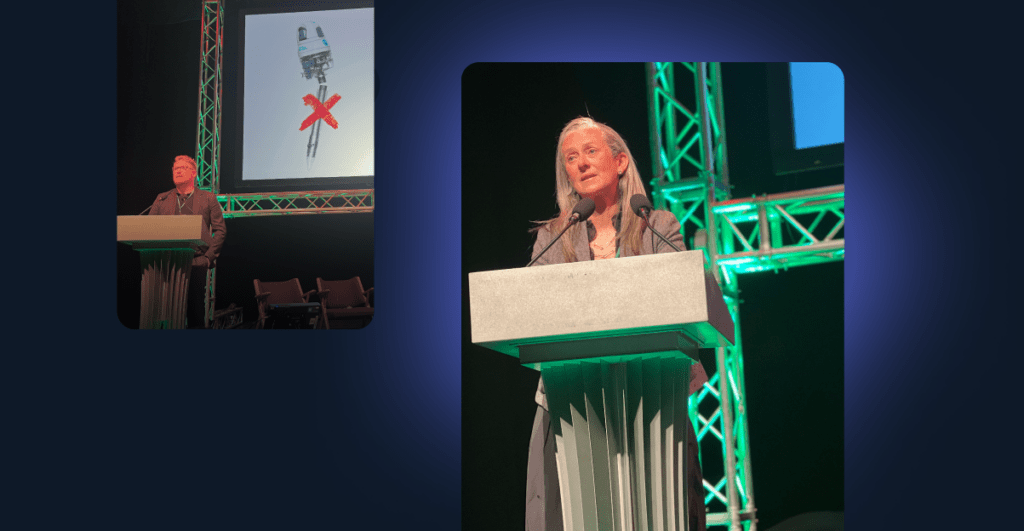
MITS demonstrated a shared passion for a change in health. The potential of med-tech is really exciting, but it’s a journey that will require persistence, expertise, collaboration and creativity. Thankfully, with the support of the fantastic med-tech community, brilliant ideas are being realised.
At Big Motive, we are passionate about creating meaningful, impactful change for users through supporting med-tech companies and public healthcare organisations with research, systems thinking and service design.
